Pretty pictures
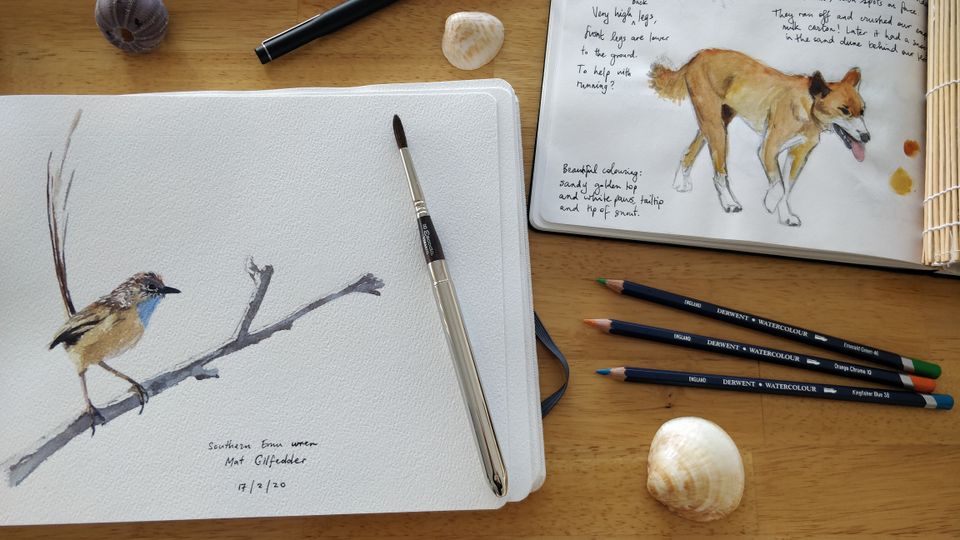
With nature journaling I hear a lot of "it's not about making a pretty picture". So what is it about then? Before I get into this I want to explore what draws us to pretty pictures and why it's not always the goal for nature journaling.
Why do we feel the need for pretty pictures?
If we look at young children, they just want to create, they don't feel the need to make a pretty picture. Only as they get older do they start to compare themselves to others. Before they reach this age they are content to make something with whatever tools they have - chalk on the floor, painting with their fingers, colouring inside and outside the lines. They spend 2 minutes on one page then flip to another, and another in a creative blur of activity that makes you wonder if they even remember their previous drawing. At the end they are satisfied, not necessarily with what they have created, but that they have created.
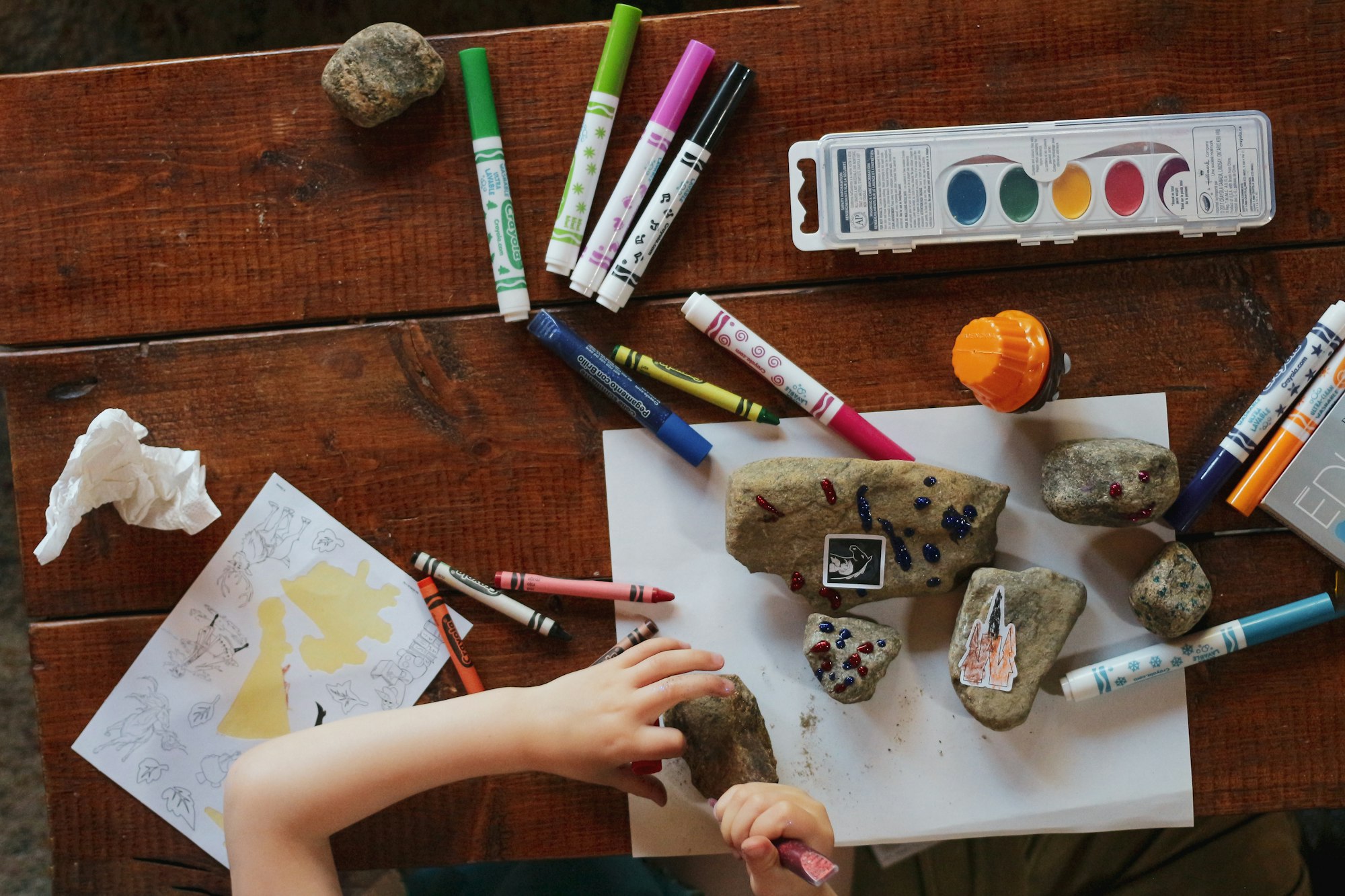
As we get older we appreciate that art that looks more realistic, or cleverly designed (among other criteria), pleases us aesthetically. The problem arises when we desire to create aesthetically pleasing art, with a vision in our minds of what it should look like, and our abilities are insufficient for the job. This disconnect makes us sad, lose faith in our own abilities, leading some people to quit. "Why continue? I'll never be that good," they think. Remember this isn't true because drawing and painting, like other skills, can be improved on with practice.
There is beautiful art all around us. Perhaps access to photography and the internet makes us more aware of the amazing skills people from all over the world have in capturing realistic detail or inspiring concepts. I think it's natural to want to reproduce something we think is beautiful, such as the delicate flower blooming or an interesting phenomenon we have just witnessed. With beauty comes awe and inspiration and I don't think I'm alone in saying I love to see people react that way to my art too. It forms a connection, even if it is a touch narcissistic.

As John Muir Laws says once we form a connection with nature then it's hard not to fall in love with it (see podcast episode below). From there his (and my) hope is to foster a sense of responsibility or stewardship for our environment. If there is such power in forming connections from making pretty pictures, why wouldn't we want to use nature journaling to harness it and motivate environmental stewardship?
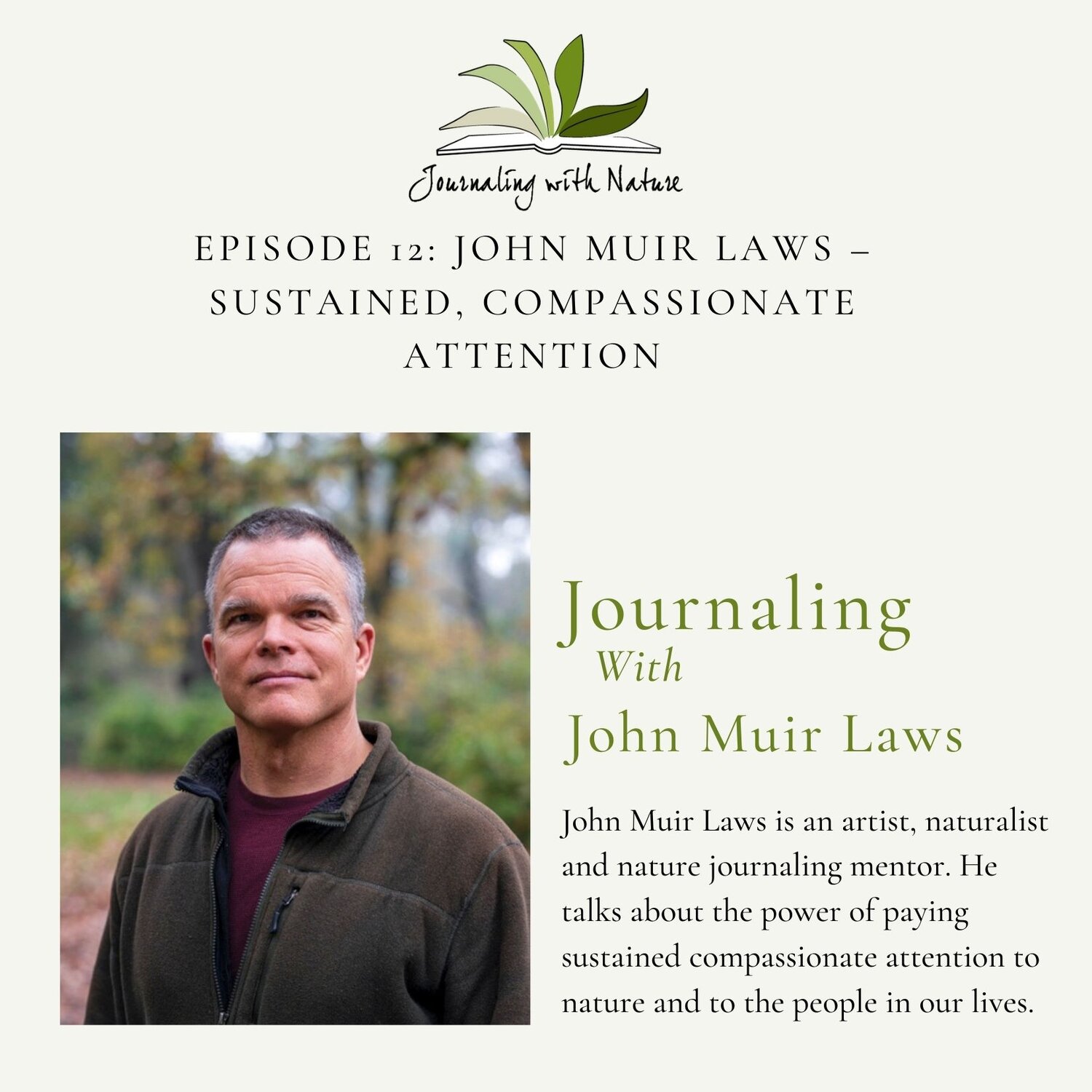
What is nature journaling about then?
The truth is, nature journaling can have pretty pictures and certainly does try to use the power of connecting art with nature to promote stewardship. However, this doesn't have to be its major purpose. Fine art draws people in by the power of intriguing pictures, sometimes with strong storytelling aspects, while political cartoons make you question the current happenings of the world. Nature journaling is about creating as a tool to connect with your environment. Whether you create with words, pictures or use numbers it is the act of recording, rather than the final page itself, that carries the true power of building connection here.
This is why nature journaling encourages you to be like that young child: be curious and ask questions without expecting answers, create with abandon, don't worry about the final image, just make another page ('pencil miles'), use whatever you have available (even nature itself - see below!) to record your environment. This behaviour pushes us towards the act of creating rather than producing a pretty picture.
So no pretty pictures?
This is something I've been struggling with recently. I feel proud now with my drawing and painting abilities. I also like to look at others' creations, their ideas and the beauty I see inspires me to keep creating. Why can't we have pretty pictures in our nature journal? Well, we can. If it helps us form a connection, gives us satisfaction and doesn't hinder us then we should!
My understanding is that: nature journaling isn't about the pretty pictures (if you can't make them, that's OK), but if there are pretty pictures in your journal that's OK too!
As long as we keep in mind it's not a competition for the best-looking page or most accurate capture, then whatever we create is perfect for our nature journals.
Sketching has always been the messy side of art. It's expected to be unfinished, lines everywhere, not necessarily coloured, it might not even make much sense to anyone except the artist. Although a sketch might not be as pretty as the final piece, it can be beautiful in its own way. Importantly, it's usually necessary to have many sketches and other preliminary work to ensure the end product looks good!
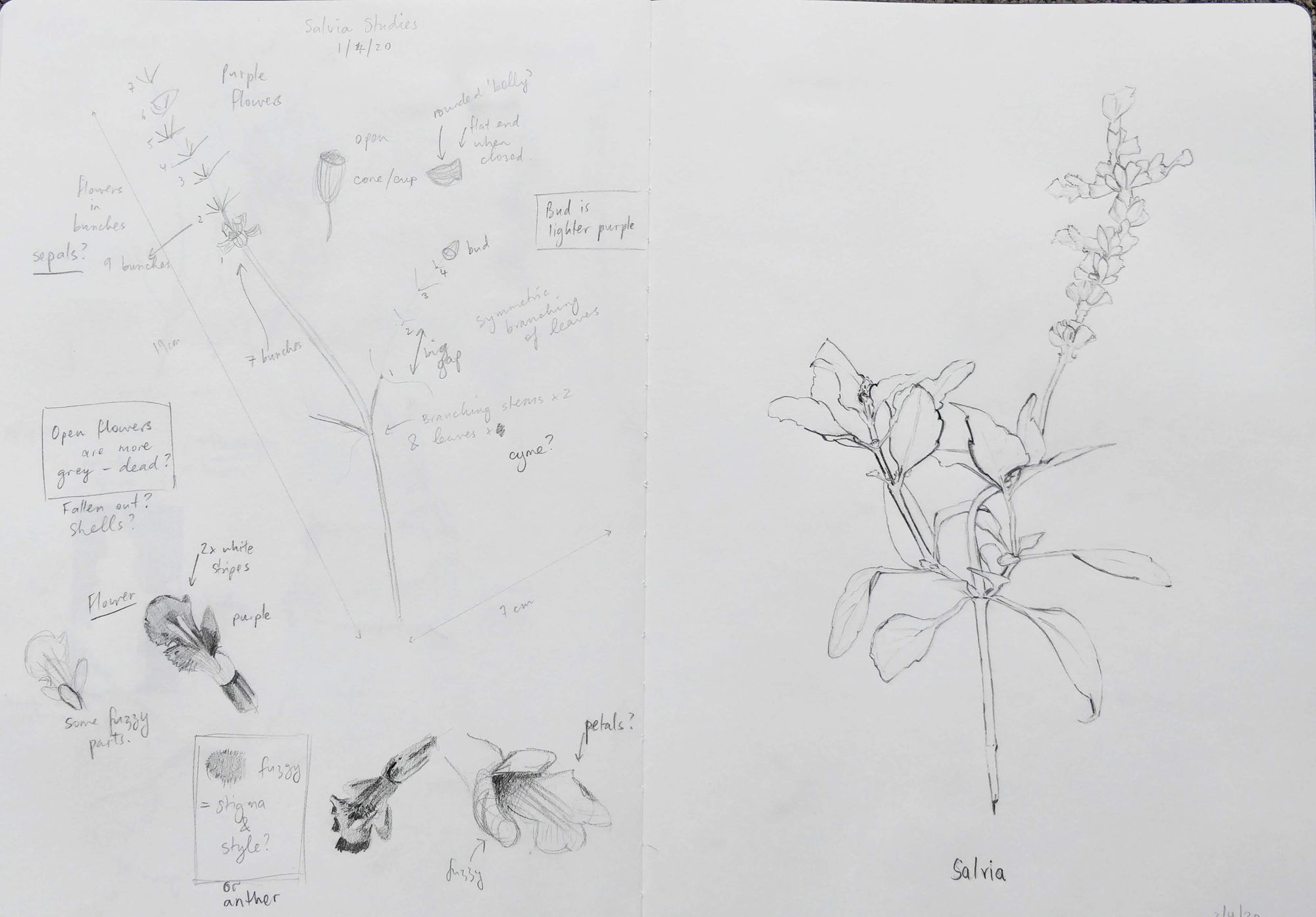
I believe nature journaling is similar to sketching in that it's not about making a pretty picture but its a necessary step in the process to get thoughts and observations down. Sometimes I see it as part of my research for building an informed natural history illustration. However nature journaling doesn't have to be for preparation, it can also just be about spending time in nature.
I've made my peace with the fact that there might be some pretty pictures in my nature journal, and it's fine if there's plenty in there that are messy too. After all, those messy bits might end up sparkling like diamonds with just a bit more polishing.
When it is about a pretty picture
Outside of my nature journal there are times when I do desire to create a polished piece of art. As I mentioned in my previous post this puts pressure on us to not make mistakes. Sketching and nature journaling are part of the preparation process for me to help reduce the chance of making mistakes in these situations.
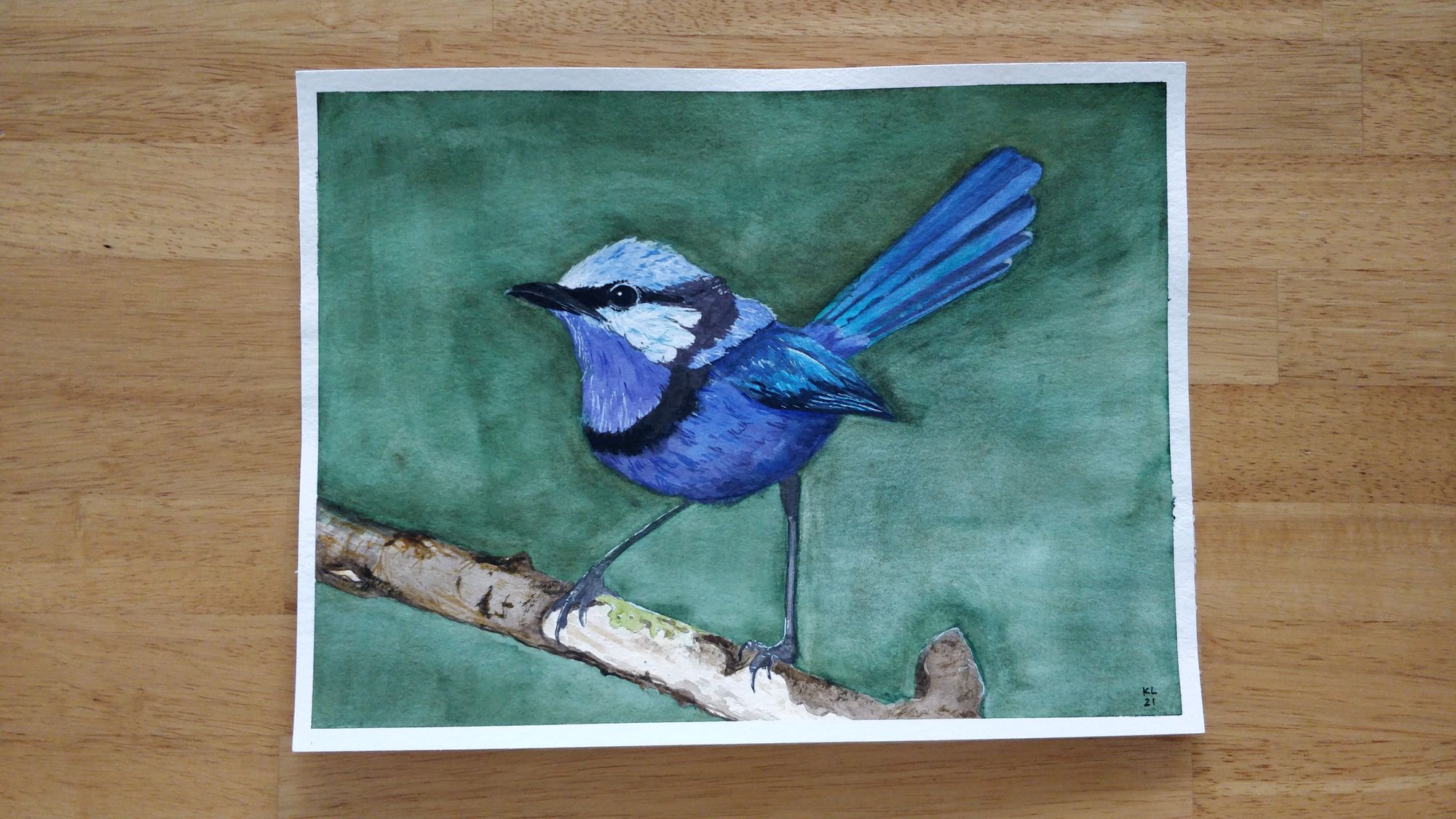
Nature journaling trains the eye to observe from 3D and moving objects, to actually see what is in front of us instead of what we think we see. Our hand-eye coordination improves and our ability to spot inaccuracies gets sharper. In natural history illustrations it's important to reference multiple specimens and photos, otherwise mistakes such as missing or incorrect anatomy may occur, for instance due to foreshortening.
Nature journaling also gathers other important information such as the environmental surroundings, abundance of species, differences between individuals and weather impacts, to list a couple off the top of my head. These can enhance the artwork, for instance in choosing a truly representative background.
I also believe nature journaling is a great practice for my mind to accept making mistakes. By constantly creating pages without a care if the final page looks good or not, I'm training to push past those thoughts that might hold me back from even starting and not worrying if mistakes are made but moving on to the next interesting item to record.
The perils of making pretty pictures
One of the first ideas I had related to nature journaling was to find the emblems of each state and territory of Australia and nature journal, research and video them. I started with hiking to some waratahs (floral emblem of NSW) and nature journaling them in late 2020, then this year I wrote a blog post and did some research on them. I still need to edit the footage but otherwise the waratah project is nearly complete.
Except, before I publish the blog post and video, I also want to create an illustration from my nature journal pages. Unfortunately its become a block for me and I've been postponing in fear of not creating a worthy picture for the project.
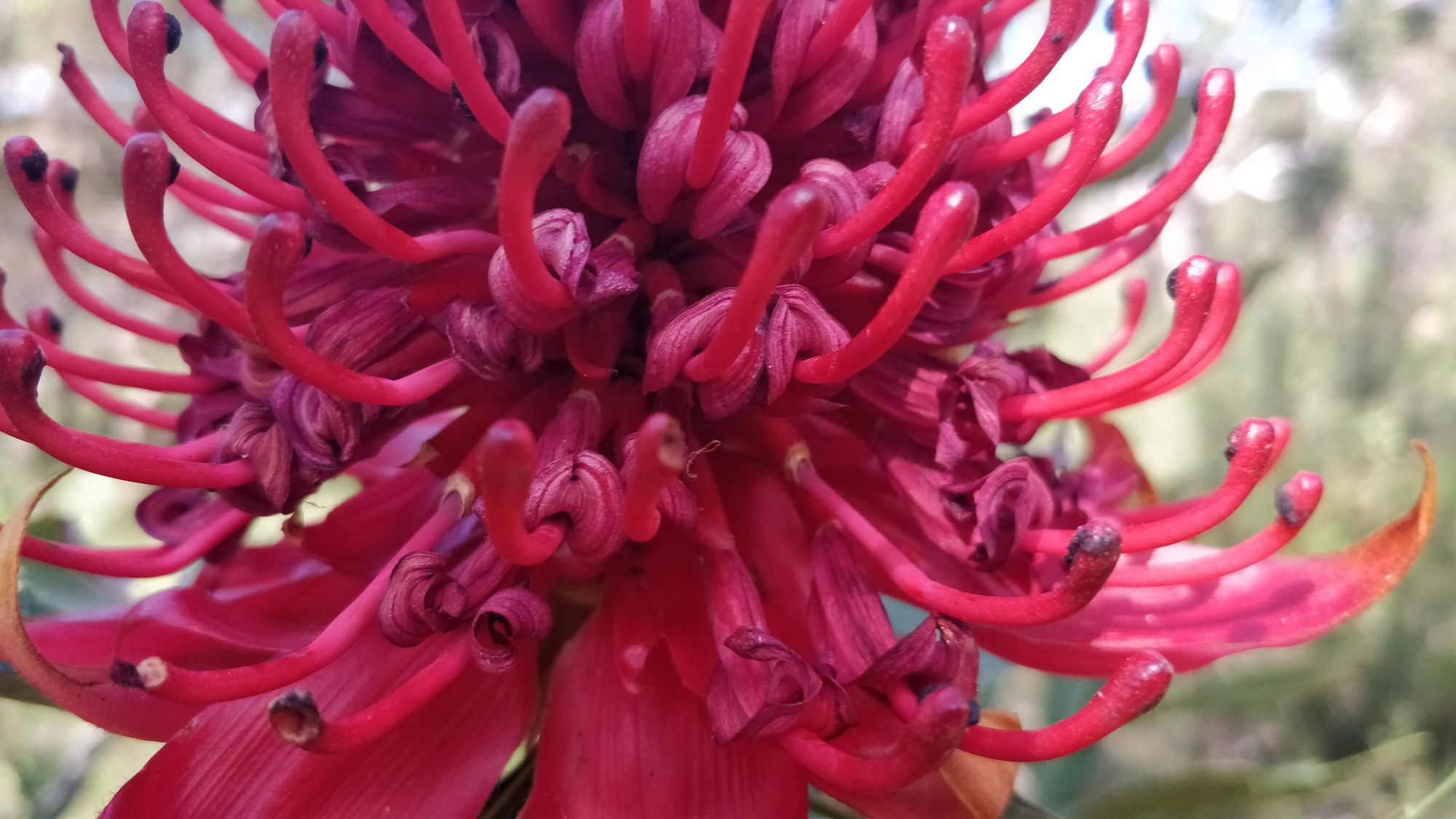
So, here's to reaching to my inner child, being brave and just creating. Maybe it just takes 10 pages to get there.

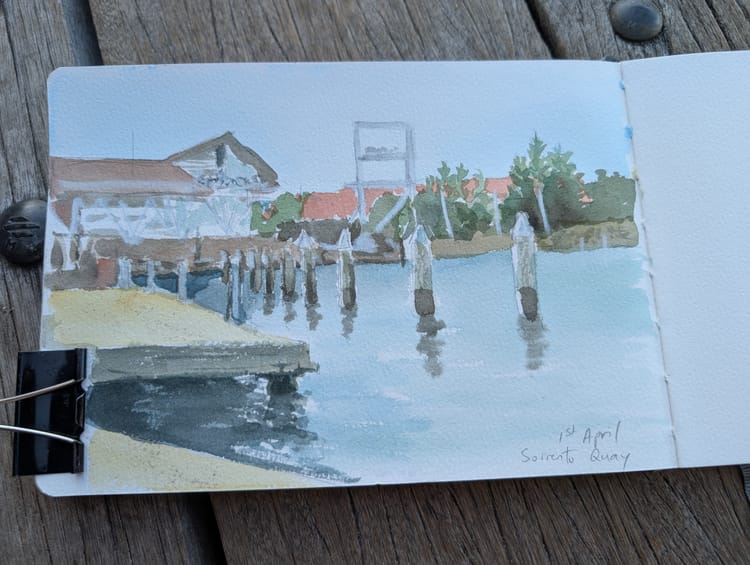
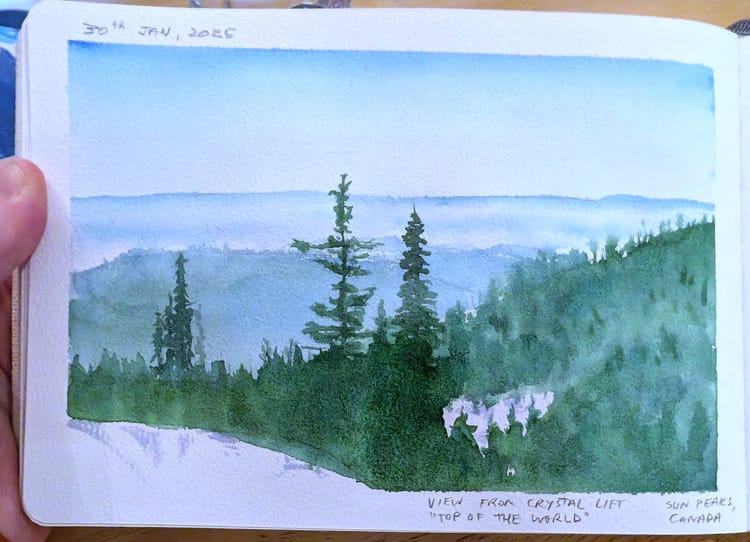
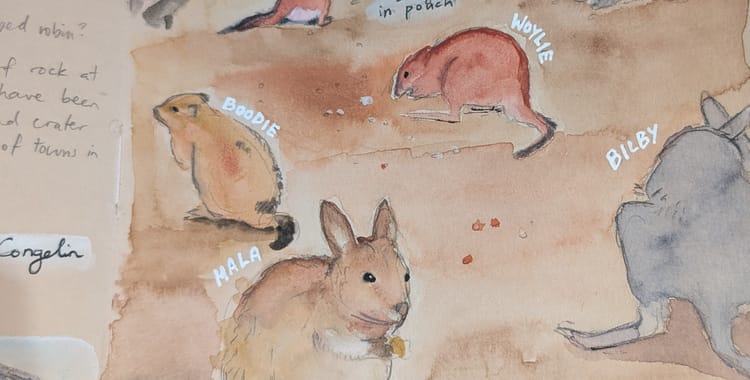
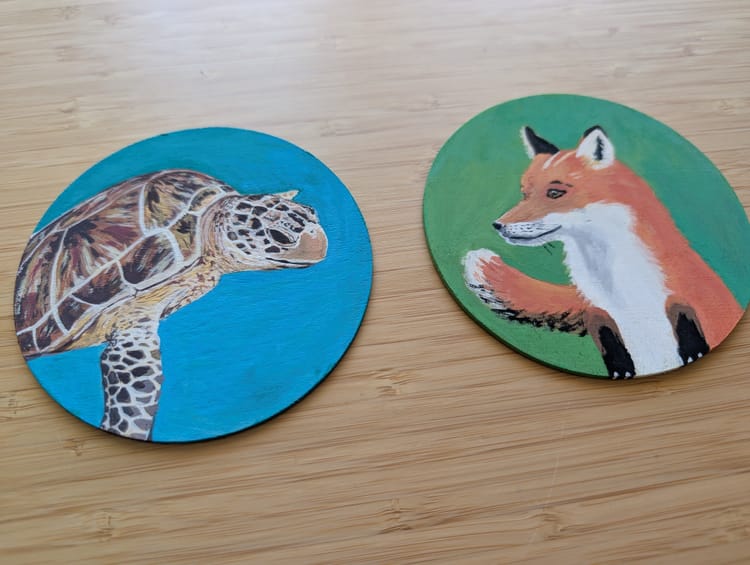
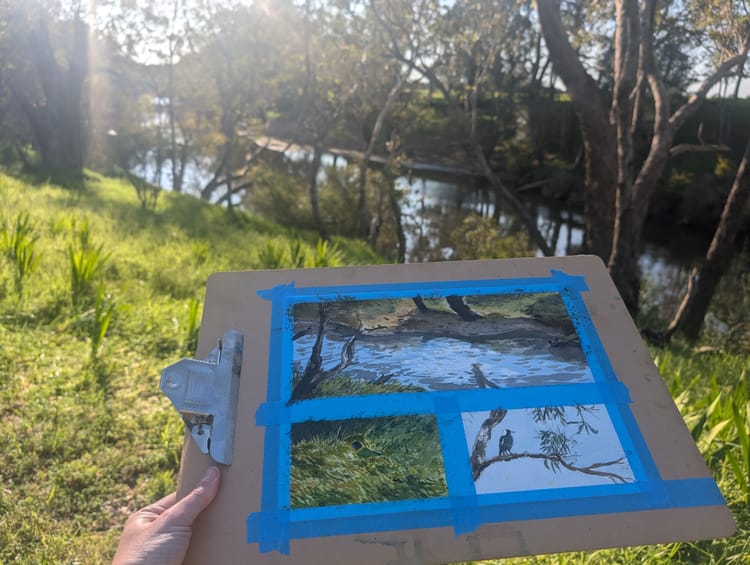
Member discussion